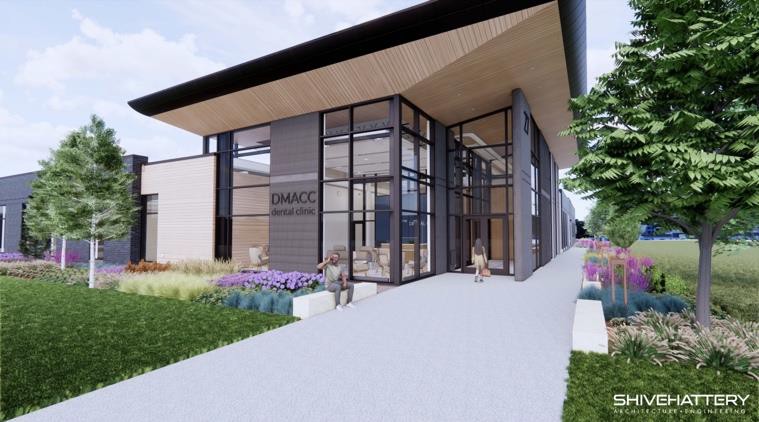Health care leaders prioritize recruitment, retention as Iowa’s physician shortage worsens

As Iowa grapples with an ominous physician shortage, health care leaders are focusing their attention on recruitment and retention.
Iowa Medical Society Board President Christina Taylor, Iowa Clinic CEO Ben Vallier, UnityPoint Clinic Chief Medical Officer Joshua Rehmann and American Medical Association President Bruce Scott have each underscored in recent months the dire need to increase the number of practicing physicians.

The alarms follow a report from the Association of American Medical Colleges (AAMC), published March 21, that projects the U.S. will face a shortage of up to 86,000 physicians by 2036.
Meanwhile, Iowa’s 227 physicians per 100,000 population is among the worst ratios in the United States. Only Arkansas, Alabama, Idaho, Mississippi, Nevada, Oklahoma and Wyoming rank lower, according to data from the AAMC.
The Cicero Institute, a nonpartisan think tank and policy organization based in Austin, Texas, reports that Iowa ranks 44th in total physician supply, 45th in active primary physicians and 50th in obstetrics.
Armed with increasingly concerning data, the Iowa Medical Society will welcome about 55 physician leaders from across the state for an Operation IOWA (Innovative Opportunities for Workforce Action) summit Dec. 6 in Des Moines to workshop recommendations for how to tackle the problem.
“It’s really about getting kind of a think tank and thought leaders to [discuss] what are some of the things we can do to help come up with some ideas,” said Great River Health Chief Medical Officer Dr. Michael McCoy, who is a co-chair for the summit.
Some of the ideas McCoy proposed were looking at ways of getting students in the health care pipeline, exploring proactive environment recommendations, and trying to prevent early relocations or retirements.
McCoy said artificial intelligence and virtual care support will play a key role. “We won’t be able to just retain and recruit our way out of this,” he said.
“A lot of the AI to me for physicians, it’s not so much a physician, but how can you support a physician? How can you help them document things easier, so they’re not standing in front of the computer, but they’re talking more to the patient and the documentation is more AI generated?” McCoy said. “That work has already started; it’s getting better. But those are the kind of things we have to do to make the workforce we have more efficient.”
Citing Mayo Clinic data that shows in 2021, 1 in 4 U.S. physicians indicated it was “likely” or “definite” they would leave their current practice within 24 months, Scott called for reducing administrative burdens for physicians and decreasing unnecessary or lengthy prior authorization.
“AMA studies show [the physicians planning to leave the practice] is largely because of the administrative burdens,” Scott said during his visit to Iowa in July. “A major driver of that is prior authorization, and the second major driver is a continually shrinking Medicare reimbursement system. Adjusted for inflation, physicians are actually reimbursed by Medicare 29% less in 2024 than they were in 2001.
“[The Centers for Medicare and Medicaid Services] announced … and anticipated an additional 2.8% cut in 2025 in spite of the fact that their own estimates are that medical practice costs are going to go up 3.6%.”
Scott met with the Iowa Medical Society board of directors on July 12 as part of the organization’s summer meeting to discuss solutions to the rural health crisis at both the state and federal levels.
“Having not only primary care physicians but specialty physicians throughout the state is very important if people are going to receive the care they need,” Taylor said.
The Iowa Medical Society advocates for legislation that increases incentives for physicians to work in rural areas, such as expanding loan forgiveness and reallocating unused J-1 visa waivers to allow qualified international medical graduates to remain in the U.S.
“We can do things in this state to help attract and retain physicians,” Taylor said. “One of the ways that we can do that is help with the rural physician loan program that already exists within the state. We’re lucky that it’s partially funded, but we have a request that they fully fund that, so that we have the ability to help recruit and retain physicians into rural Iowa, where it can be traditionally more difficult to recruit.
“Another focus is, ‘How do we make it easy for physicians to want to stay here?’ And that’s by reducing things that make working difficult, like extra administrative burdens that make it frustrating for a physician to just care for patients the way they want to.”
Earlier this year, the Iowa Clinic unveiled a new Physician Care Services program that aims to help employers, insurance companies and patients receive higher-quality and more cost-effective care.
“It’s called a clinically integrated network,” Vallier said. “It’s essentially different groups of physicians that can come together, and they can share quality and financial data in a way that helps us to improve our practices across the state. And we hope it helps to provide resources to medical practices that might not otherwise have the level of expertise or the technology that they would otherwise need to be able to do some of these things.”
It also provides support to independent doctors to help them stay independent and operate a clinic anywhere in Iowa.
“I think the broader issue is there’s just not enough physicians across the country to address what we call the silver wave, which is the retirement of baby boomers, and their increasing health care needs,” Vallier said. “That’s just a really, really big group of folks who are all entering the health care system with greater needs at the same time, and there are simply not enough physicians across the country to take care of them.”
As a founding member and customer of Physician Care Services, the Iowa Clinic can now share certain services with its new rural partners to help rural providers remain viable.
“One of the things that we’re doing through Physician Care Network is we’re working together to share best practices, to share technology and analytics so that we can help doctors and the providers look at their practice and look at the patients and their care in more of a longitudinal way, in a broader way, so that they can see what’s going on with their patients,” Vallier said.
One of the strategies Rehmann said UnityPoint Clinic is focused on is getting more Iowans into medical school.
“We know that people a lot of times go back and practice in the state that they’re from or a state that they trained in or went to undergrad,” Rehmann said. “So if we have more people from Iowa communities as their hometown or went to undergrad at colleges in Iowa and then do medical school in Iowa, they’re more apt to then stay in the state and be physicians and [advanced practice providers] afterward.”

Kyle Heim
Kyle Heim is a staff writer and copy editor at Business Record. He covers health and wellness, ag and environment and Iowa Stops Hunger.










